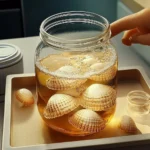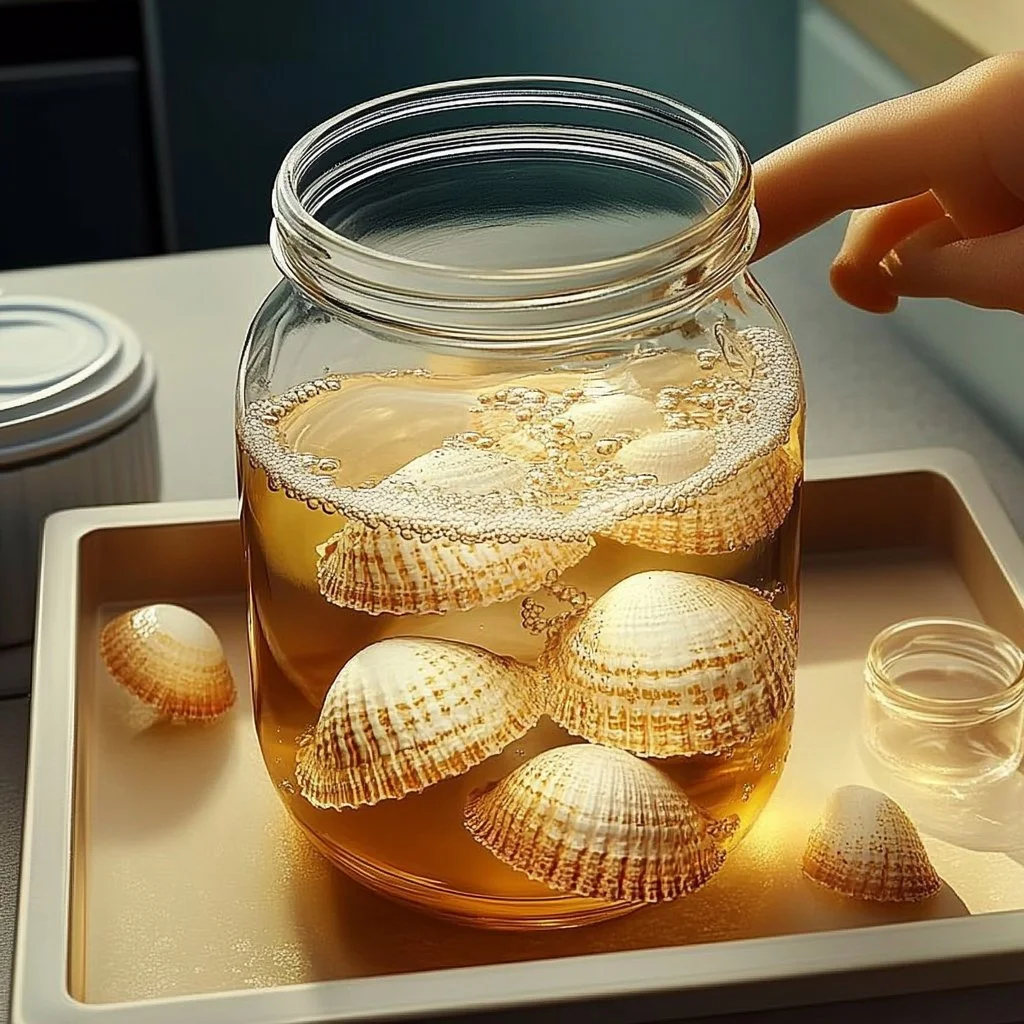Seashells are fascinating natural treasures that tell stories of the ocean’s depths. They can be collected during beach vacations or found in craft stores, and they provide endless opportunities for creativity and exploration. One fun way to enhance your seashell collection is through the simple and engaging "Seashells in Vinegar" experiment. This activity not only transforms ordinary seashells into beautiful art pieces but also teaches valuable scientific concepts. The reaction between the vinegar and the calcium carbonate in the shells creates a captivating visual experience, and you’ll be left with shimmering shells that can be used for various craft projects.
Whether you’re a parent looking for an exciting activity with your kids or an adult wanting to spice up your crafting routine, this experiment is guaranteed to be a fun and educational experience. So grab your materials and let’s dive into this hands-on adventure!
Why You’ll Love This Seashells in Vinegar Experiment:
- Educational: Learn about chemical reactions and the science behind seashell composition.
- Sensory Engagement: Experience tactile and visual transformation as the shells change.
- Creative Outlet: Use the finished shells for crafts, decor, or gifts.
- Simple Process: Requires minimal materials and is easy to set up and execute.
- Customizable: Personalize the experience by choosing different seashells or colors.
Materials:
- Fresh seashells (clean and dry)
- White vinegar
- A glass or plastic container (with a lid if desired)
- Food coloring (optional)
- Paper towels for drying
Full Step-by-Step:
1. Prepare Your Seashells
- Start with clean, dry seashells. If they have any sand or dirt, rinse them under cold water.
2. Set Up the Experiment
- Place the seashells in the container. Ensure they fit comfortably without stacking them too high.
- If you’d like to add some color, pour a few drops of food coloring onto the shells.
3. Add Vinegar
- Slowly pour white vinegar over the seashells until they are completely submerged.
- You will notice immediate fizzing as the vinegar reacts with the calcium carbonate in the shells.
4. Observe the Reaction
- Watch and listen as bubbles form and the fizzing continues. This is a fun moment to share with kids!
- Let the shells sit in the vinegar for about 24 hours for best results.
5. Rinse and Dry
- After 24 hours, carefully remove the shells from the vinegar.
- Rinse them under cold water to get rid of any remaining vinegar and residue.
- Lay them on paper towels to dry completely.
Tips & Variations:
- Swap Shells: Try this experiment with different types of seashells for varied results.
- Add Sparkle: Once dry, you can paint the shells with glitter or use clear nail polish for extra shine.
- Decorative Uses: Utilize the finished shells to create jewelry, keychains, or home decor.
Frequently Asked Questions:
1. Can I use any type of vinegar?
Yes, while white vinegar is preferred for clarity, you can use apple cider vinegar. Just note that it may leave a slight color.
2. What if my shells don’t fizz?
If there’s no fizzing, your shells may be low in calcium carbonate or have been treated. Try using another shell or a different vinegar.
3. How do I store my finished shells?
Once dry, store your seashells in a cool, dry place. If using them in crafts, keep them in a container to prevent damage.
4. Can I repeat the experiment with the same shells?
Yes, but the shells may not react as dramatically each time. It’s best to use new or freshly cleaned shells for each experiment.
Suggestions:
- Combine the seashells with other natural materials, like sand or pebbles, to create terrariums.
- Make greeting cards using shells as embellishments for a unique touch.
- Host a seashell-themed crafting party where participants can share their creations.
Final Thoughts
The "Seashells in Vinegar" experiment is a delightful blend of science and art, providing endless opportunities for creativity and learning. We’d love to hear how your shells turned out! Share your experiences or crafting ideas in the comments!
Print
Seashells in Vinegar Experiment
- Total Time: 1450 minutes
- Yield: Varies based on the number of shells used
- Diet: N/A
Description
Transform ordinary seashells into beautiful art pieces with this engaging science experiment that showcases the reaction between vinegar and seashells.
Ingredients
- Fresh seashells (clean and dry)
- White vinegar
- A glass or plastic container
- Food coloring (optional)
- Paper towels for drying
Instructions
- Start with clean, dry seashells. Rinse under cold water to remove sand or dirt.
- Place the seashells in the container, ensuring they fit without stacking too high. Add food coloring if desired.
- Slowly pour white vinegar over the seashells until completely submerged. Watch for fizzing as the reaction begins.
- Observe the reaction, allowing shells to sit in vinegar for about 24 hours for best results.
- After 24 hours, carefully remove the shells, rinse under cold water, and lay them on paper towels to dry completely.
Notes
You can personalize the experience by choosing different seashells or colors. Try adding glitter or clear nail polish for extra shine after drying.
- Prep Time: 10 minutes
- Cook Time: 1440 minutes
- Category: Craft
- Method: Science Experiment
- Cuisine: N/A
Nutrition
- Serving Size: 1 container of shells
- Calories: 0
- Sugar: 0g
- Sodium: 0mg
- Fat: 0g
- Saturated Fat: 0g
- Unsaturated Fat: 0g
- Trans Fat: 0g
- Carbohydrates: 0g
- Fiber: 0g
- Protein: 0g
- Cholesterol: 0mg

